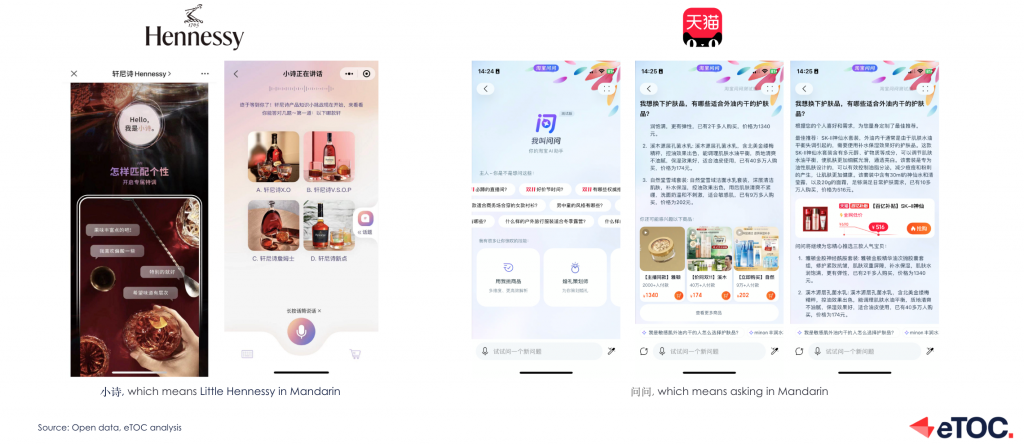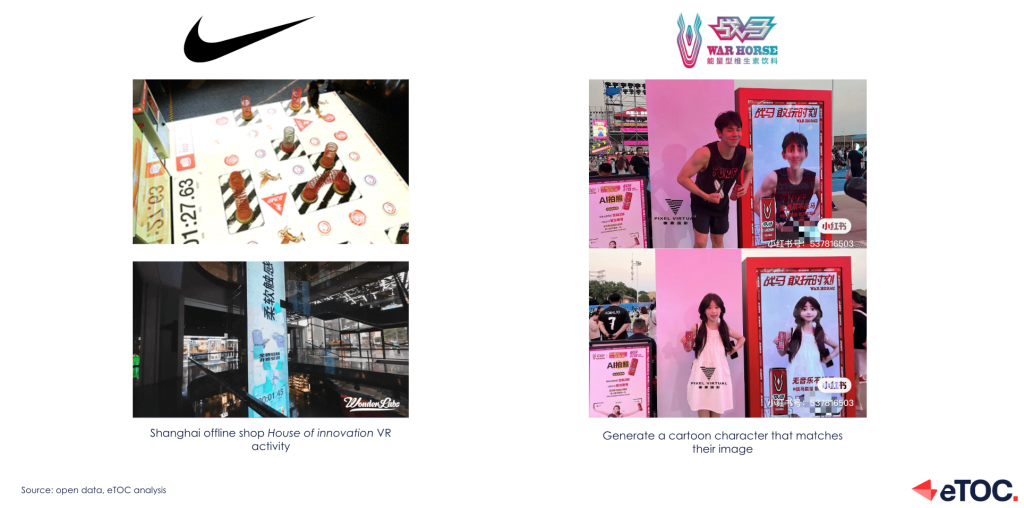China Marketing Trends 2024
Embarking on the journey through 2024, we witness a remarkable evolution in China’s marketing domain, marked by a fusion of technological advancements and evolving consumer dynamics. This landscape is becoming a crucible of innovation and strategic shifts, reshaping how brands engage with their audience. The following exploration into the most pivotal marketing trends in China for 2024 offers a unique lens through which businesses and marketers can view and understand the nuances of this vibrant market. From embracing groundbreaking technologies to adapting to new consumer behaviors, this article provides a comprehensive guide to navigating the complexities and seizing the opportunities in China’s rapidly transforming marketing environment.
1. Personalization
The trend of personalization is dominating China’s marketing landscape, with brands leveraging data analytics and AI to create highly personalized experiences. This approach is rooted in understanding individual consumer behaviors and preferences, significantly enhancing engagement, brand loyalty, and retention.
Personalization has transcended from being a luxury to a necessity in business. According to Epsilon, 90% of consumers find personalization appealing, with 80% more likely to engage with brands offering personalized experiences. Technologies like Augmented and Virtual Reality (AR/VR) are key players in this trend, providing immersive digital experiences that mimic in-store shopping.
Mobile experience remains crucial. Brands are focusing on creating intuitive, feature-rich mobile apps. Real-time product customization is enhancing the online shopping experience, allowing customers to see their personalized choices immediately, thereby reducing return rates.
Visual search technologies enable searches using images, further personalizing the shopping experience. AI’s role in e-commerce extends to personalized product recommendations, pricing optimization, and auto-generated product descriptions, all aimed at enriching customer engagement.
Additionally, AI is instrumental in ensuring authenticity in reviews and combating fake feedback, with systems prioritizing verified customer reviews for more accurate feedback. 3-D product visualization is gaining importance in sectors like furniture and interior design, offering customers a more lifelike view of products.
Furthermore, social sharing features in e-commerce and the growth of subscription services are contributing to this personalization trend, enhancing brand awareness and customer retention. Location-based personalization, using geo-location detection for automatic store-view redirection and accurate translation, is also enhancing the real-time browsing experience.

2. Evolving Luxury Market
The luxury market in China is undergoing a significant transformation, particularly in the cosmetics and fragrance sectors. These changes are driven by a focus on sensory experiences and interactive events, reflecting a shift towards more immersive and experiential consumer engagement.
Following the economic challenges of 2023, including high interest rates and inflation, China’s luxury market has shown remarkable resilience. The recovery is evident in the nation’s improved economic indicators, notably in retail sales and industrial output. This rebound is crucial, considering China’s status as the world’s second-largest luxury market.
One key factor in this resurgence is the strengthening of China’s property market, closely linked to the spending power of the middle class, historically a major contributor to luxury consumption. Despite global economic pressures, the luxury market, especially in hard luxury segments like watches and jewelry, has maintained its appeal, indicating a trend towards value-oriented purchasing.
The pandemic-induced shift to domestic luxury spending continues to dominate in 2024. Chinese consumers’ preference for local luxury purchases has been bolstered by enhanced product offerings and customer experiences within China.
Amidst these trends, the “Guochao” movement is reshaping luxury marketing, reflecting a surge in national pride and a fusion of traditional Chinese elements with modern aesthetics. This cultural revival is exemplified by collaborations like Versace and Yang Fudong, blending Italian luxury with Chinese artistry.
3. Outdoor activities and winter sports
China’s passion for winter sports and outdoor activities has reached new heights, catalyzed by the lingering excitement from the Winter Olympics. This enthusiasm extends beyond traditional winter sports like skiing and snowboarding, encompassing a wide array of outdoor pursuits.
This burgeoning interest has prompted brands to diversify their offerings, with companies venturing into outdoor wear. Their expansion taps into the growing outdoor lifestyle market, aligning with the global trend of “athleisure,” where fashion and functionality merge seamlessly. The market now thrives on innovations that blend technical fabrics with modern designs, catering to consumers who value both style and utility.
The increased interest in outdoor activities in China is also a rebound from the extended period of coronavirus restrictions. Social media trends reflect this change vividly. On platforms like Xiaohongshu, China’s version of Instagram, there’s been a substantial increase in content related to outdoor activities. For instance, hiking and mountaineering content views surged by 300%, while cycling and biking saw a 400% increase. This uptick also extends to other activities like diving, surfing, and camping, underscoring the widespread and growing interest in outdoor leisure.
The sports and outdoor apparel and footwear market in China is witnessing rapid growth and deeper consumer penetration in 2024. This expansion isn’t confined to a single category; it spans diverse areas, including camping, skiing, cycling, and tennis. Each category, while growing for different reasons, shows similar growth rates. The trends in these categories are evolving quickly and becoming increasingly digitized. This quick growth, followed by a plateau, highlights the importance of precise and effective consumer communication for brands looking to capitalize on these emerging trends.
With the upcoming 2025 Asian Games in Harbin, a city fast becoming a top winter destination, the momentum for winter sports and related consumption in China is likely to increase even further. This ongoing trend presents an exceptional opportunity for brands that are ready to cater to this growing demand in China’s dynamic and expanding winter sports and outdoor market.
4. Virtual and Augmented Reality
Virtual and Augmented Reality (VR and AR) technologies are playing a transformative role in enhancing customer experiences in China. These technologies are enabling brands to create highly immersive and interactive experiences, effectively bridging the gap between the digital and physical worlds. This innovation is not only captivating consumers but is also providing them with unique and engaging ways to interact with products and services.
The market for AR and VR in China is experiencing significant growth, with projected revenues reaching US$7.8 billion in 2024. This upward trend is expected to continue, with an anticipated annual growth rate (CAGR) of 10.29% from 2024 to 2028, potentially leading to a market volume of US$11.6 billion by 2028. This growth reflects the increasing integration of AR and VR technologies in various sectors, ranging from retail and entertainment to education and healthcare.
These technologies are revolutionizing traditional marketing and sales strategies by offering innovative solutions for product demonstrations, virtual try-ons, and immersive brand experiences. For instance, in retail, VR and AR enable customers to try products virtually, enhancing decision-making and reducing the gap between online and offline shopping experiences. In education and training, these technologies provide interactive and realistic simulations, facilitating more effective learning and skill development.
Moreover, AR and VR are also being leveraged for remote assistance and virtual tours, offering new avenues for customer service and engagement. The integration of these technologies into mobile platforms and applications is further amplifying their accessibility and impact, making AR and VR a ubiquitous part of the consumer experience in China.

5. Mindful Consumption
Moreover, China’s marketing landscape is increasingly shaped by the trend of mindful consumption. This shift sees consumers gravitating towards smaller, premium, and local brands that excel in offering unique experiences underpinned by sustainability and quality. This change is indicative of a growing ‘value mindset’, where responsible consumption is a priority.
This evolving consumer behavior emphasizes more than just pricing; it’s about aligning with a brand’s values and ethics. Consumers are actively seeking brands that resonate with their personal beliefs, particularly in areas of sustainability and ethical practices. The digital realm is instrumental in this shift, serving as a platform for brands to communicate their commitment to these values and to integrate them into their marketing strategies.
As consumers become increasingly discerning, the need for brands to authentically connect with their audience becomes imperative. This connection goes beyond conventional marketing, fostering a deeper, more personal resonance with consumers.
Brands in 2024 must not only creatively leverage technology but also align with these evolving consumer values, like sustainability and transparency. Understanding and catering to these value-driven preferences is key for brands to establish meaningful relationships with their audience.
6. Technological advancements
Technological advancements are fundamentally reshaping marketing strategies in China. The integration of cutting-edge tools like artificial intelligence, big data analytics, and blockchain technology is now central to marketing, offering deep insights into consumer behavior and enabling more targeted and effective approaches.
Following the Generative AI boom in 2023, Chinese companies across various sectors are heavily investing in digital technologies like IoT, blockchain, cloud computing, and data analytics. This trend is driven by the potential to unlock value in innovative ways and the need to adapt these technologies into business models for enhanced efficiency and innovation.
7. Sustainable marketing
Sustainable marketing remains a pivotal element in the strategies of successful brands, reflecting an evolving consumer consciousness in China. Several studies have underscored a growing preference among consumers for eco-responsible brands, indicating a significant shift towards more environmentally and socially conscious buying decisions.
This trend goes beyond mere eco-friendly initiatives; it involves a comprehensive integration of environmental and social governance factors into the core messaging and operational practices of brands. This integration is evident in the use of sustainable materials, support for social causes, and adherence to ethical business practices.
In China, the approach to sustainable marketing is undergoing a transformation. Consumers are increasingly seeking products that are not just aesthetically pleasing but also sustainable. There’s a growing understanding and appreciation for longevity in fashion, marking a shift in consumer values towards sustainable living.
Marketing sustainability in China requires a nuanced approach. Moving away from focusing solely on technical and manufacturing aspects, brands are now connecting sustainability with heritage and culture. This connection is seen as a route to wellbeing, where every aspect of consumption, from clothing to food, is linked to personal and environmental health. This approach underscores the need for brands to place people at the center of their sustainability efforts, not only in terms of environmental impact but also in cultural relevance. Chinese consumers are also willing to pay a premium for brands that effectively combine cultural value with product longevity and a community-focused approach. However, these consumers have high expectations. Brands that can successfully merge these elements—cultural value, longevity, and community focus—are more likely to resonate with and succeed in the Chinese market.
As digital marketing costs rise, and the landscape becomes more challenging, the emphasis on retaining and bonding with communities through sustainable practices becomes increasingly crucial. The trend in 2024 shows that sustainable marketing in China is not just an environmental statement—it’s a comprehensive strategy that intertwines nature, culture, and community, aligning with the evolving values of today’s conscious consumers.
8. AIGC
Content marketing is undergoing a significant transformation with the amplified integration of Generative AI. This technology is revolutionizing the way businesses approach content creation, particularly in the realms of SEO, social media, and email marketing. Companies are now adopting structured methodologies to enhance the effectiveness of content throughout the customer journey. Generative AI is enabling the creation of more personalized, relevant, and engaging content, which is not only improving customer engagement but also streamlining the content creation process. This innovative approach allows brands to maintain a dynamic and responsive online presence, essential in the fast-paced digital landscape.
9. Social Media as a Search Engine
The role of social media platforms like RED and Douyin is rapidly evolving, positioning them as primary search engines for the younger generations, particularly Millennials and Gen Z. This evolution presents a unique opportunity for brands to connect with these demographics through targeted and strategic social media initiatives. By focusing on creating engaging and interactive content, brands are able to captivate and retain the attention of these younger, tech-savvy audiences. This trend highlights the increasing importance of social media platforms in the decision-making process of these consumers, emphasizing the need for innovative and relevant social media marketing strategies.
10. “Quiet Selling” Livestream Trend
The livestreaming landscape in China is also seeing a notable shift with the emergence of the “quiet selling” approach. Influencers are moving away from aggressive sales tactics, opting instead for a more nuanced method that emphasizes storytelling and immersive experiences. This trend is redefining the norms of livestream commerce. The focus is now on creating a deeper connection with the audience through content that offers value and engagement beyond traditional sales pitches. This refined approach to livestreaming is resonating with consumers who seek a more authentic and less intrusive shopping experience, reflecting a broader shift towards subtlety and sophistication in digital marketing strategies.

Conclusion
The marketing trends in China for 2024 paint a picture of a landscape in flux, heavily influenced by technological innovation and a deepening understanding of consumer needs. From the personalization of customer experiences to the integration of AR, VR, and AI in marketing strategies, these trends highlight the importance of adaptability and innovation in the digital age. As Chinese consumers become more discerning and environmentally conscious, brands must align their strategies with these evolving preferences to remain relevant and competitive. Ultimately, success in China’s dynamic marketing environment in 2024 will depend on a brand’s ability to creatively harness technology while maintaining a strong focus on sustainability, transparency, and genuine consumer engagement.

Discover the Future of Shopping with "Shopatainment – The Future of Shopping"
Our new book “Shopatainment – The Future of Shopping” explores how the innovative fusion of shopping and entertainment is revolutionizing the way we shop. Learn about the origins of this trend in China, the technologies and formats being used, and the opportunities and challenges it presents for the West.

Want to expand to the Chinese market? Contact us for a first free consultation.
